Dear readers, do you know that President Rodrigo Duterte signed Republic Act 11547 on May 27, 2021, declaring Davao City1 as the “Chocolate Capital of the Philippines” and the entire Davao2 Region3 (Region XI) as the “Cacao Capital of the Philippines”? Allow Tita S to tell you more.
This law recognizes the importance of cacao as a “driver of rural development” because of its potential as a raw material that can increase the country’s export earnings tremendously. Local cacao production has boosted export earnings and this law also recognizes cacao for putting the name of the Philippines on the map for producing the finest chocolate beans and providing livelihood to many small farmers in the countryside.
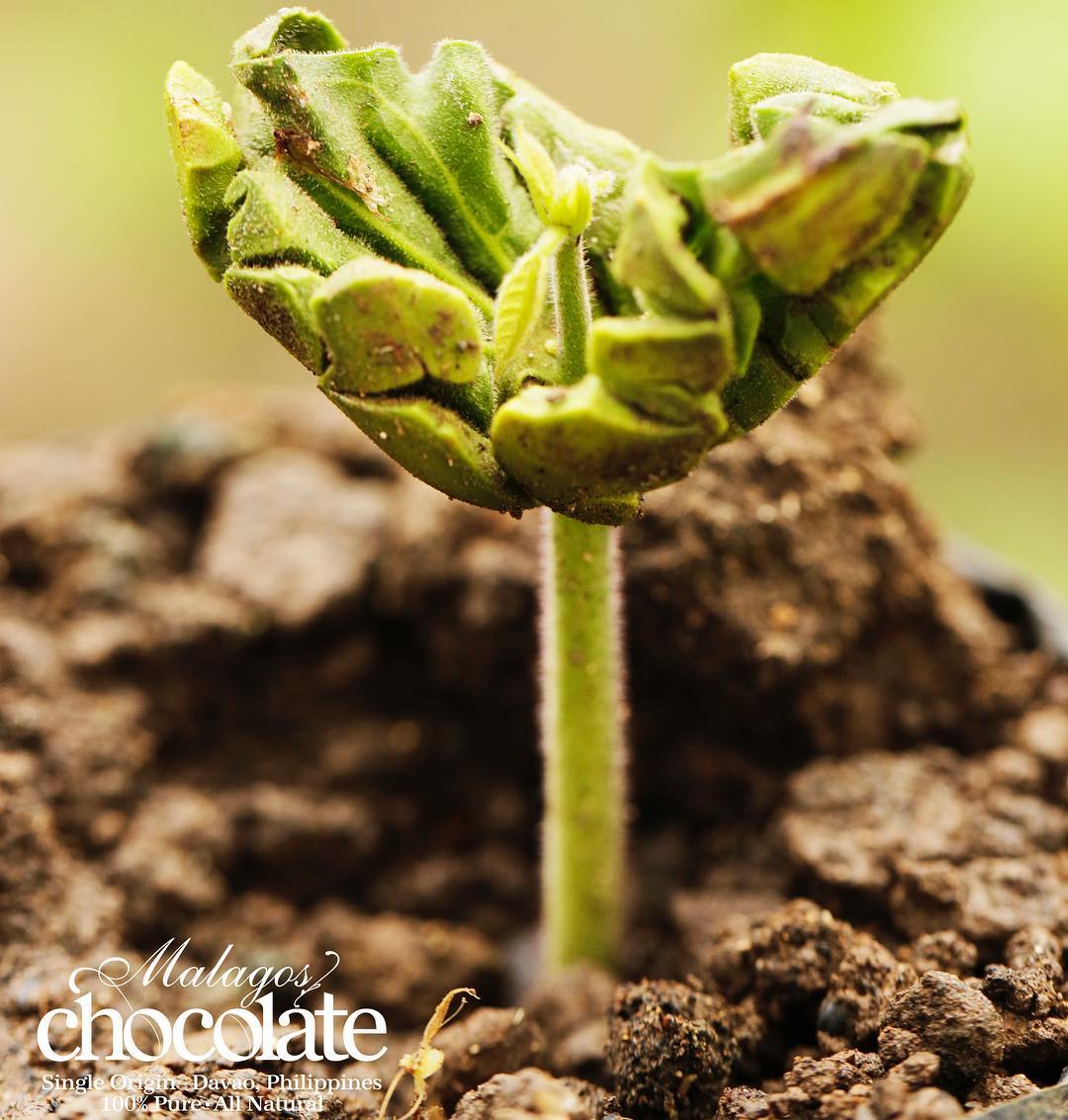
Lollipop stage of a cacao seedling, Puentespina Farm, Photo source: https://www.facebook.com/malagos.chocolate/photos/a.1512124955511197/1757553527635004
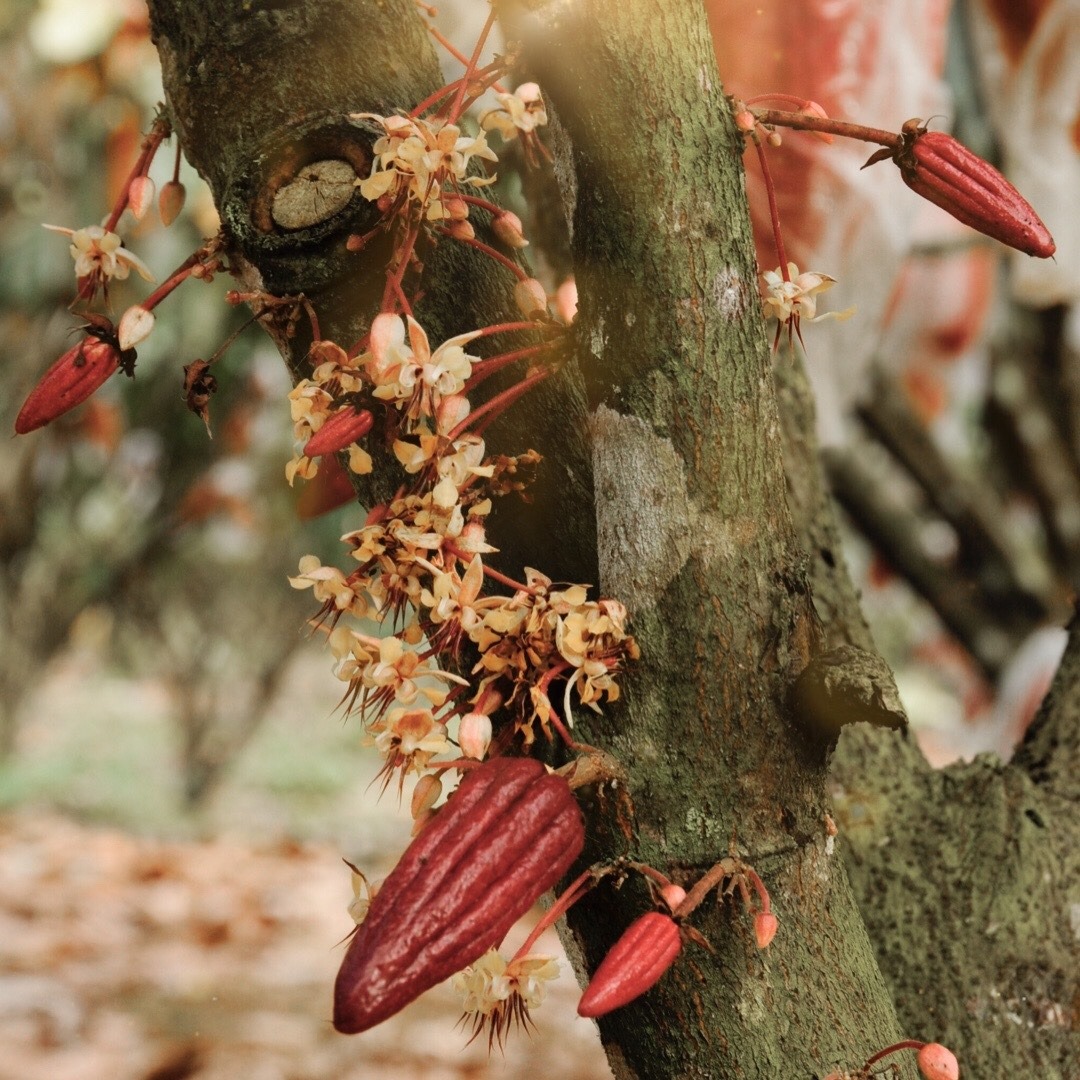
Cacao flowers and new fruits, Puentespina Farm, Photo source: https://www.facebook.com/malagos.chocolate/photos/a.1512124955511197/2939431636113848
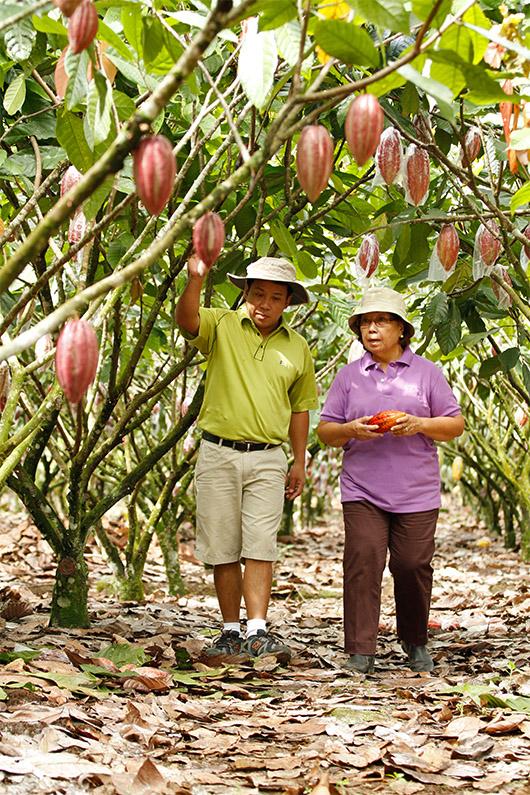
Cacao trees with fruits, Puentespina Farm, Malagos in the foothills of Mt. Talomo, Barangay Baguio District, Davao City – Photo source: https://malagoschocolate.com/
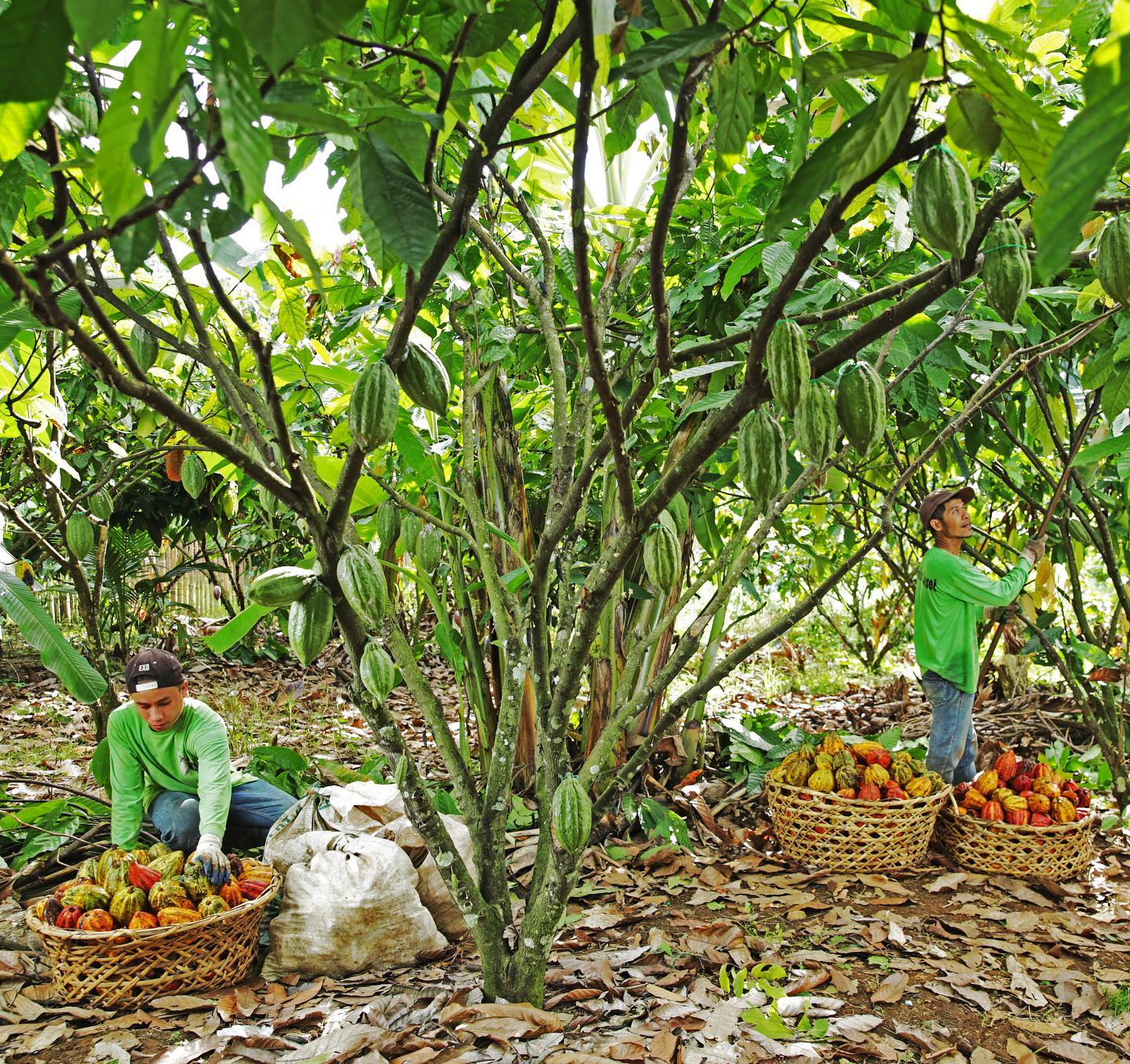
Harvest time, Puentespina Farm, Photo source: https://www.facebook.com/malagos.chocolate/photos/a.1512124955511197/3534073513316321
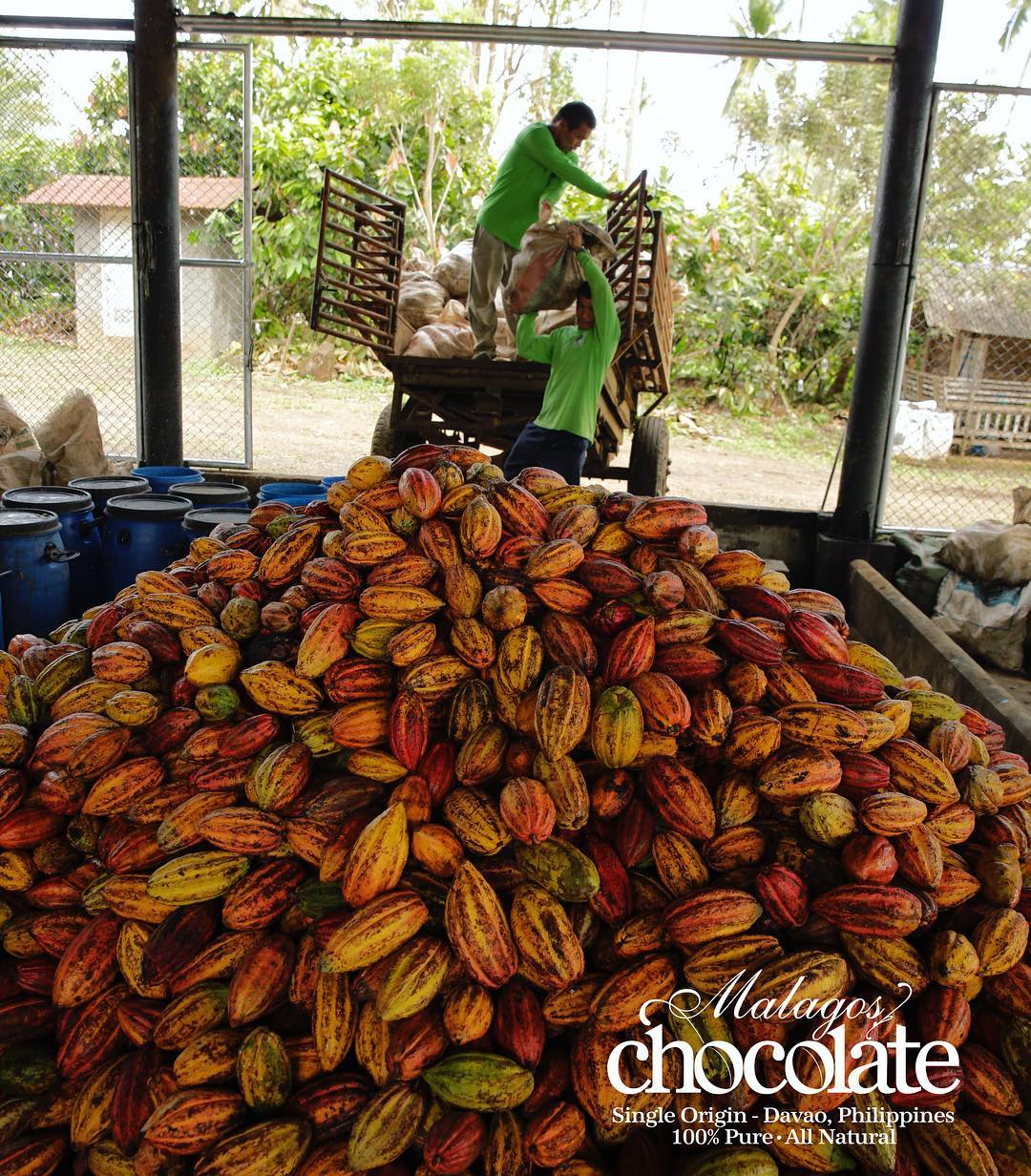
Harvest time-2, Puentespina Farm, Photo source: https://www.facebook.com/malagos.chocolate/photos/a.1512124955511197/1670297959693895
The Davao Region2 was given such a title because of “its status as the country’s biggest producer of cacao and its vital contribution in making the Philippines world-renowned and sought after by chocolate makers from the USA, Japan and Europe”.
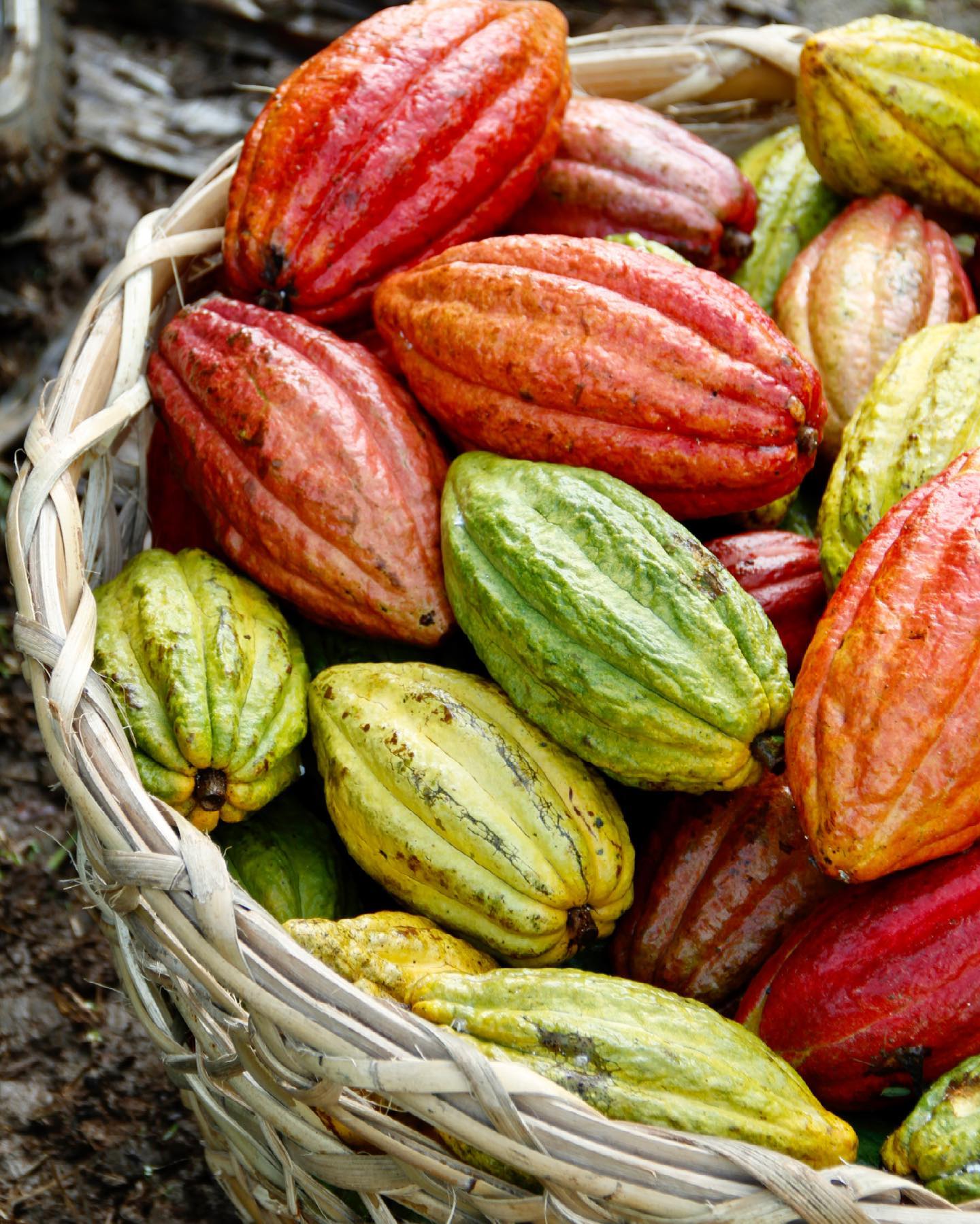
cacao, Malagos, Davao City – Photo source: https://www.facebook.com/malagos.chocolate/photos/a.426789647378072/3954271327963202
The law also stated that the State is constitutionally mandated to promote the industrialization and full employment, based on sound agricultural development and agrarian reform.
In 2020, the Department of Agriculture declared that Davao City1 alone produced 2,289.74 metric tons of cacao, or 38% in regional share.
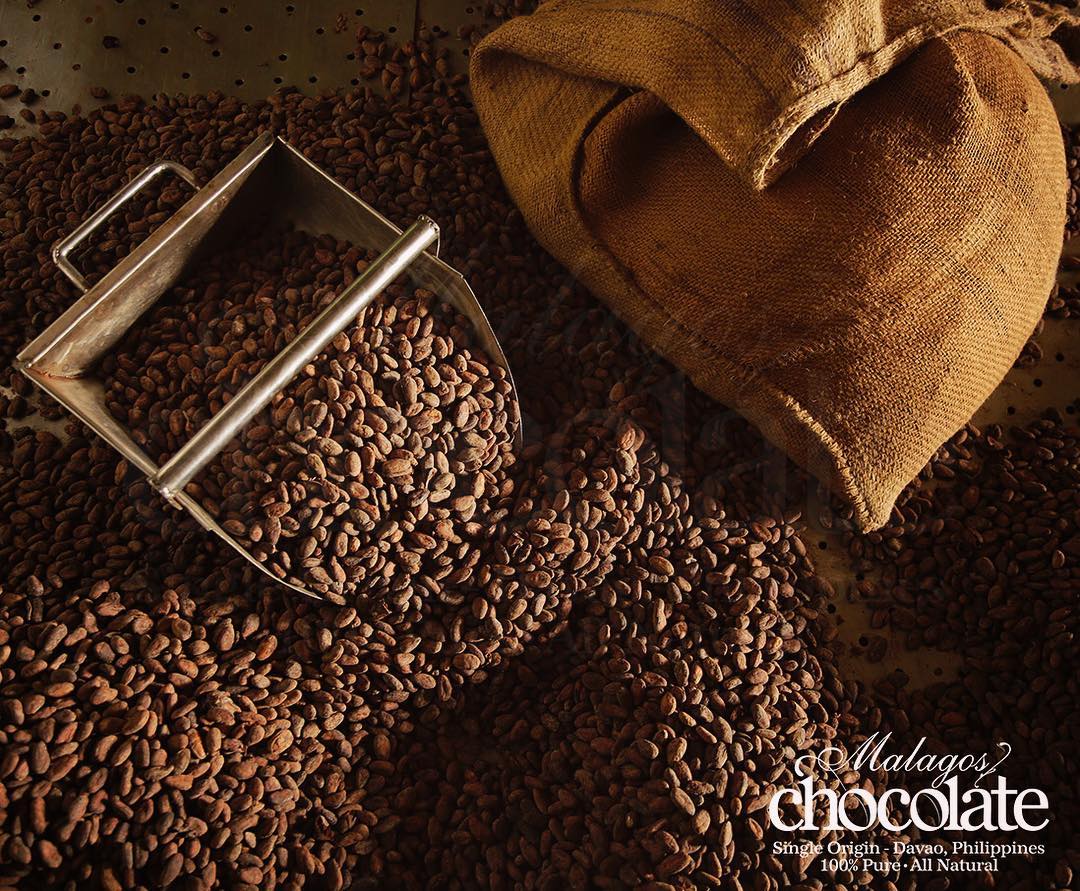
Dried cacao beans, Puentespina Farm, Photo source: https://www.facebook.com/malagos.chocolate/photos/a.1512124955511197/1695716297152061
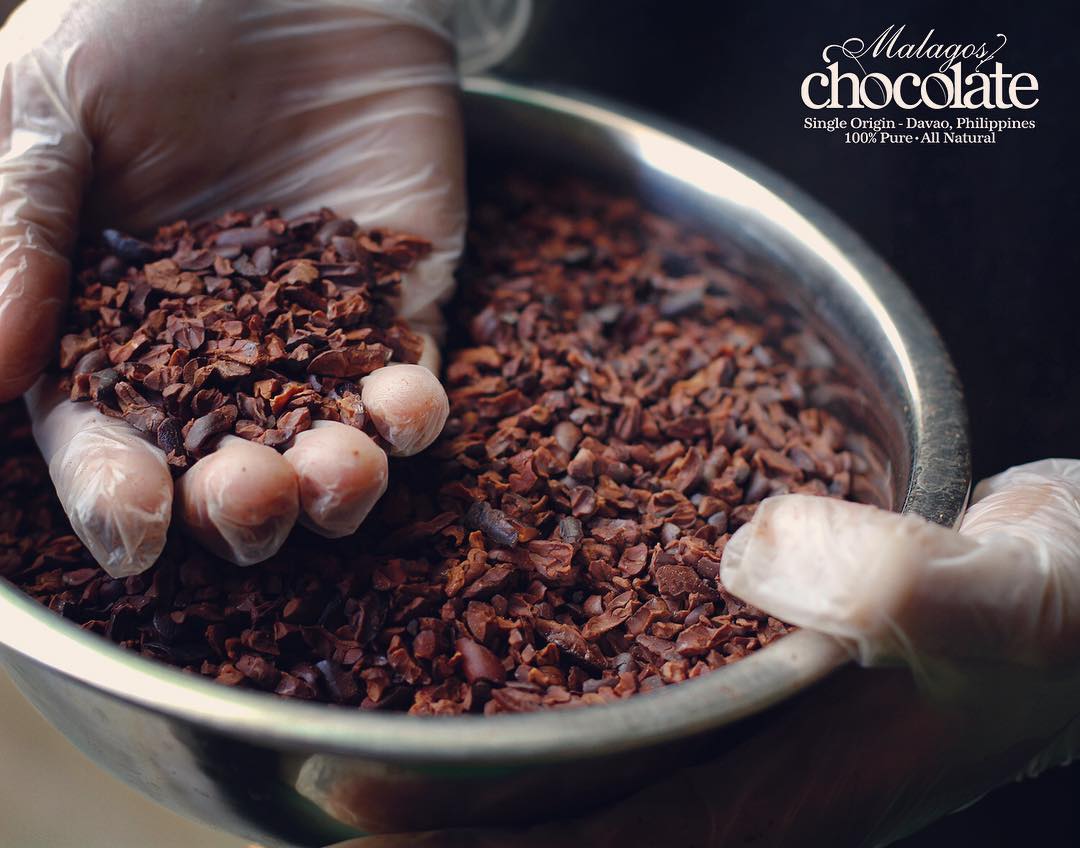
After roasting, the cacai beans are cracked open and the husk removed to harvest the nibs, Malagos, Photo source: https://www.facebook.com/malagos.chocolate/photos/a.1512124955511197/1678206105569747
Davao Region’s total contribution to the national output reached 5, 960.23 metric tons, or 70.21%.
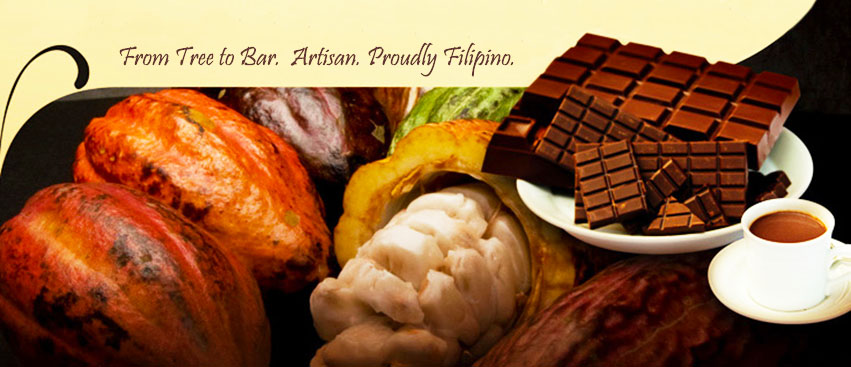
Malagos cacao and chocolate – Photo source: https://www.facebook.com/malagos.chocolate/photos/a.426789647378072/527153397341696
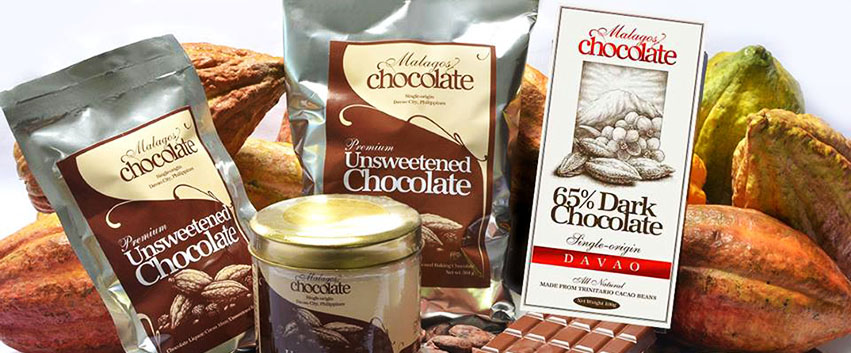
Malagos chocolates – Photo source: https://www.facebook.com/malagos.chocolate/photos/a.426789647378072/663167233740311

Malagod unsweetened chocolate perfect for hot chocolate – Photo source: https://www.facebook.com/malagos.chocolate/photos/a.1512124955511197/4002399923150342
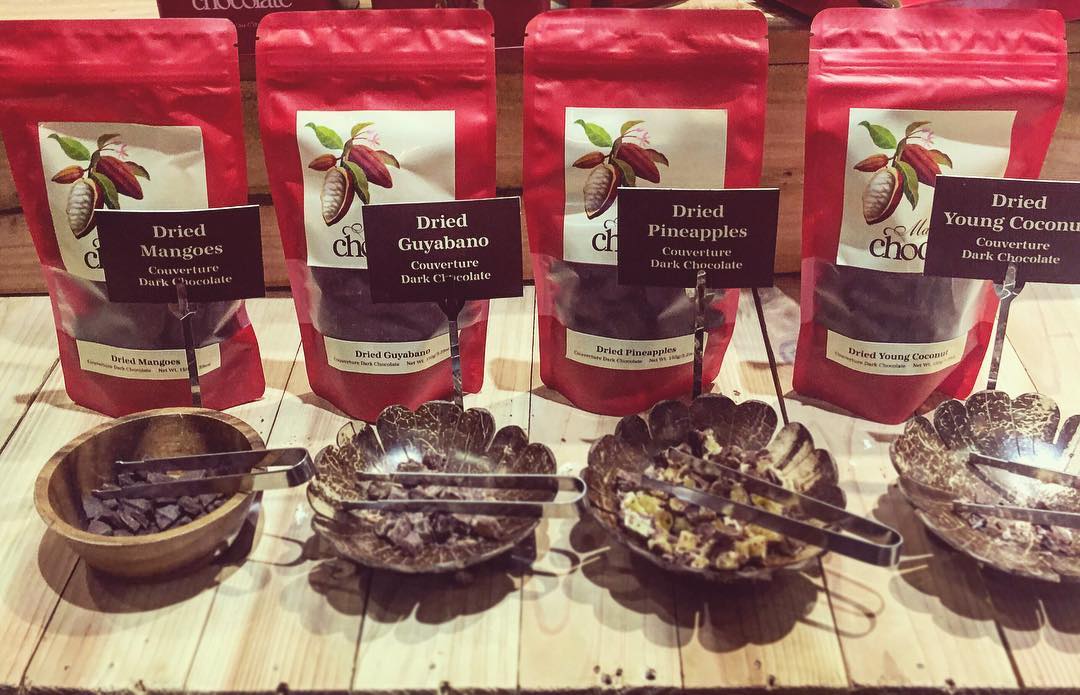
Malagos fruit collection with couverture chocolate – Photo source: https://www.facebook.com/malagos.chocolate/photos/a.1512124955511197/1879061508817538

Malagos pralines – Photo source:
https://www.facebook.com/malagos.chocolate/photos/a.1512124955511197/1869521159771573
Senator Cynthia Villar, the chair of the Senate Committee on Agriculture, Food and Agrarian Reform, sponsored the measure in the upper house. Co-authors were Senators Christopher Lawrence Go and Ronald de la Rosa, both from the Davao Region2.
Senator Villar noted the data of the Philippine Statistics Authority (PSA) which showed that the bulk of the total annual cacao production, about 78.76%, came from the Davao Region2, with more than 20,000 hectares of cacao farms. She pushed for the recognition of the contribution of cacao farmers in Davao City1 and Davao Region, hoping these places would inspire other local government units to spur agricultural growth.
She also said cacao farmers have received international acknowledgment as evidenced by the awards received over the years.

3 award-winning dark chocolates, Malagos – Photo source: https://www.facebook.com/malagos.chocolate/photos/a.1512124955511197/3904729729584029 post
This new law takes effect 15 days after publication in the Official Gazette or in a newspaper.
The information was obtained from: https://www.pna.gov.ph/articles/1141691, https://cnnphilippines.com/news/2021/5/27/Davao-City-chocolate-capital.html#:~:text=Metro%20Manila%20(CNN%20Philippines%2C%20May,the%20country’s%20%22Cacao%20Capital.%22, https://mb.com.ph/2021/05/27/davao-city-declared-ph-chocolate-capital/, https://newsinfo.inquirer.net/1437694/davao-city-is-now-ph-chocolate-capital-davao-region-is-cacao-capital, https://news.abs-cbn.com/news/05/27/21/duterte-davao-chocolate-cacao-capital, https://news.abs-cbn.com/business/09/08/20/davao-is-cacao-capital-of-the-philippines-says-agriculture-department, and https://philippineslifestyle.com/davao-chocolate-capital-of-philippines/.
Bottomline, this law opens more business opportunities for Davao cacao farmers, processors, manufacturers and chocolate makers. More chocolate makers worldwide will seek the cacao from this region to further boost cacao production and benefit even the small cacao farmers. Hopefully, other local government units will be inspired to embark on cacao production to spur agricultural growth in the Philippines and make the country a world-class cacao producer.
However, how about the other cacao producing areas of the Philippines? Would chocolate makers still patronize their products, knowing that Davao is officially (by law) the chocolate capital of the country? Just asking.
Did you find this post informative? I would like to hear your comment/s regarding this new law.
See other interesting places through other posts in this category and other categories of SCapades, Pinoy Delights, and Smart Travelers – Foreign Travelers Ask, Now You Know, and Say, Say, Say. Happy reading, and I hope that you will appreciate what I shared and some of the featured destinations will be part of your future travel plans!
Remember to share this post with your Facebook friends, and to follow me by clicking on the bottom right corner of your device. And, do not forget to like this post. Thank you.
– – – – – – – – – – – – – – – – – – – – – – – – – –
The following terms are defined for interested readers, especially those with “Senior-Moments”, not familiar with Filipino terms, and those too busy or lazy to Google such terms:
1Davao City is a first class3 highly urbanized city4 in the Davao2 Region3, in the Mindanao6 island group of the Philippines. It has a total land area of 2,443.61 km2 (943.48 sq mi), making it the largest city in the country in terms of land area. It is also the most populated city in Mindanao. Mount Apo, the highest peak in the Philippines, is located at the southwestern tip of the city.
It is geographically part of the province7 of Davao del Sur, but the city is governed and administered independently from it. This city serves as the main trade, commerce, and industry hub of Mindanao, and the regional center of Davao2 Region3. The city has 2 nicknames – “The Durian8 Capital of the Philippines” and “The Chocolate Capital of the Philippines”.
The information was obtained from the Wikipedia page “Davao City”.9
2Davao Region (Region XI), formerly called Southern Mindanao, is an administrative region3 in the Mindanao6 island group of the Philippines. It is located at the southeastern portion of Mindanao and has a total land area of 20,357.42 km2 (7,860.04 sq mi).
Davao is the Hispanicized pronunciation of daba-daba, the Bagobo10 word for “fire”.
It is composed of 5 provinces7: Davao de Oro, Davao del Norte, Davao del Sur, Davao Oriental, and Davao Occidental. It has 6 cities: Davao City1 (the regional center), Digos, Mati, Panabo, Samal and Tagum. It has 43 municipalities11 (towns).
The information was obtained from the Wikipedia page “Davao Region”.12
3A region is an administrative division based on geographical, cultural and ethnological characteristics. Each region is further subdivided in provinces7, composed of cities and municipalities11 (or towns), which in turn, are divided into barangays13, formerly called barrios, according to Wikipedia page “Regions of the Philippines” 14.
See a related post: Foreign Seniors Ask: WHAT ARE THE REGIONS OF THE PHILIPPINES?
4A first class city in the Philippines is a city with an average annual income of at least PHP500,000, based on the previous four calendar years, according to the Wikipecia page “Cities of the Philippines”.15
5A highly urbanized city in the Philippines is a city with a minimum population of 200,000 inhabitants, as certified by the Philippine Statistics Authority, and with an annual income of at least PHP50 million pesos, as certified by the city treasurer. There are currently 33 high urbanized cities in the Philippines, 16 of which are located in Metro Manila. The information was obtained from the Wikipedia page “Cities of the Philippines”.15
See a related post: Foreign Seniors Ask: HOW MANY CITIES ARE THERE IN THE PHILIPPINES?
6Mindanao is one of the 3 major geographical divisions of the Philippines. It is the second largest island of the country and covers 6 administrative regions3: Caraga, Davao, Northern Mindanao, SOCCSKSARGEN, Zamboanga Peninsula, and the Bangsamoro Autonomous Region in Muslim Mindanao (BARMM). It is composed of 22 provinces7 and 33 cities (27 provinces and 33 cities, if associated islands are included). The information was obtained from Wikipedia page “Mindanao.”16 Mindanao is located in the southern part of the country; the 2 other geographical divisions of the Philippines are Luzon (in the northern part) and Visayas (the middle part).
7A province is the primary administrative and political division in the Philippines. It is the second-level administrative sub-division of a region3. There are 81 provinces (called lalawigan) in the Philippines. Each province is governed by an elected legislature called the Sangguniang Panlalawigan, and by an elected governor. Remember, a province in the Philippines is divided into cities and towns (called municipalities11), which in turn, are divided into barangays13, formerly called barrios. The information was obtained from Wikipedia page “Provinces of the Philippines.”17
See a related post: Foreign Seniors Ask: WHAT ARE PROVINCES IN THE PHILIPPINES?
8Durian is the large fruit of several tree species belonging to the genus Durio, native to Borneo and Sumatra. It is called the “King of Fruits”, can hang from any branch, and matures roughly 3 months after pollination. It can grow up to 30 cm (12 in) long and 15 cm (6 in) in diameter, and typically weighs 1-3 kg (2-7 lb). Its shape ranges from oblong to round; the color of its husk is green to brown; its flesh is pale-yellow to red, depending on the species. It has a thorn-covered rind. Some people like its odor and describes it as pleasantly sweet, while others find the aroma unpleasantly overpowering. The information was obtained from Wikipedia page “Durian.”18
9“Davao City,” accessed May 27, 2021, https://en.wikipedia.org/wiki/Davao_City
10The Bagobo are one of the largest subgroups of the Manobo19 people. They were formerly nomadic and farmed through kaingin (slash-and-burn) methods. Their territory extends from the Davao Gulf to Mt Apo, the highest mountain in the Philippines. They comprise 3 subgroups: the Tagabawa, the Klata (or Guiangan), and the Ovu (Uvu or Ubo) people. They are traditionally ruled by chieftains (matanum), a council of elders (magani), and female shamans (mabalian). The supreme spirit in their indigenous anito20 religions is Eugpamolak Manobo or Manawa. The information was obtained from Wikipedia page “Lumad.”21
11A municipality is a small, single urban administrative division, or local government unit (LGU), in the Philippines which has corporate status and powers of self-government or jurisdiction as granted by law. It is a unit under a province7, subdivided into barangays13, and is locally called bayan. In the Philippines, a municipality is headed by a mayor, a vice mayor, and members of the Sangguniang Bayan (legislative branch). It can enact local policies and laws, enforce them, and govern its jurisdictions. It can enter into contracts and other transactions through its elected and appointed officials and can tax as well. It enforces all local and national laws. There are almost 1,500 municipalities in the Philippines. The information was obtained from Wikipedia page “Municipalities of the Philippines.”22
12“Davao Region,” accessed May 27, 2021, https://en.wikipedia.org/wiki/Davao_Region
13A barangay in the Philippines is the smallest administrative division in the Philippines, headed by a barangay captain, aided by a Sangguniang Barangay (Barangay Council). It is the native Filipino term for a village. It was formerly called a barrio. In a metropolitan area, a barangay is an inner city neighborhood, a suburb, or a suburban neighborhood. The word barangay originated from the term balangay, a kind of boat used by a group of Austronesian people who migrated to the Philippines. A number of barangays grouped together is called a district. The information was obtained from Wikipedia page “Barangay.”23
14“Regions of the Philippines,” accessed July 17, 2018, https://en.wikipedia.org/wiki/Regions_of_the_Philippines
15“Cities of the Philippines,” accessed May 27, 2021, https://en.wikipedia.org/wiki/Cities_of_the_Philippines
16“Mindanao,” accessed April 2, 2018, https://en.wikipedia.org/wiki/Mindanao
17“Provinces of the Philippines,” accessed May 29, 2019, https://en.wikipedia.org/wiki/Provinces_of_the-Philippines
18“Durian,” accessed May 27, 2021, https://en.wikipedia.org/wiki/Durian
19The Manobo are several people groups who inhabit the island of Mindanao6 in the Philippines. There are 8 groups: the Agusan Manobo, Cotabato Manobo, Dibabawon Manobo, Matig Salug Manobo, Monobo of Western Bukidnon, Obo Manobo, Sarangani Monobo, and Tagabawa Manobo. These groups are all very similar, differing only in dialect and in some aspects of culture. Their origin can be traced back to the early Malay people who came from the surroundings islands of Southeast Asia.24
20Anito refers to ancestor spirits, nature spirits, and deities in the indigenous Philippine folk religions from the precolonial age to the present. It can also refer to carved humanoid figures called the taotao, made of wood, stone or ivory, that represent these spirits. The information was obtained from Wikipedia page “Anito.”25
21“Lumad,” accessed May 27, 2021, https://en.wikipedia.org/wiki/Lumad
22“Municipalities of the Philippines,” accessed January 29, 2019, https://en.wikipedia.org/wiki/Municipalities_of_the_Philippines
23“Barangay,” accessed December 30, 2018, https://en.m.wikipedia.org/wiki/Barangay
24https://sites.google.com/site/thekidapawancitysitecom/tradition-culture
25“Anito,” accessed May 27, 2021, https://en.wikipedia.org/wiki/Anito

